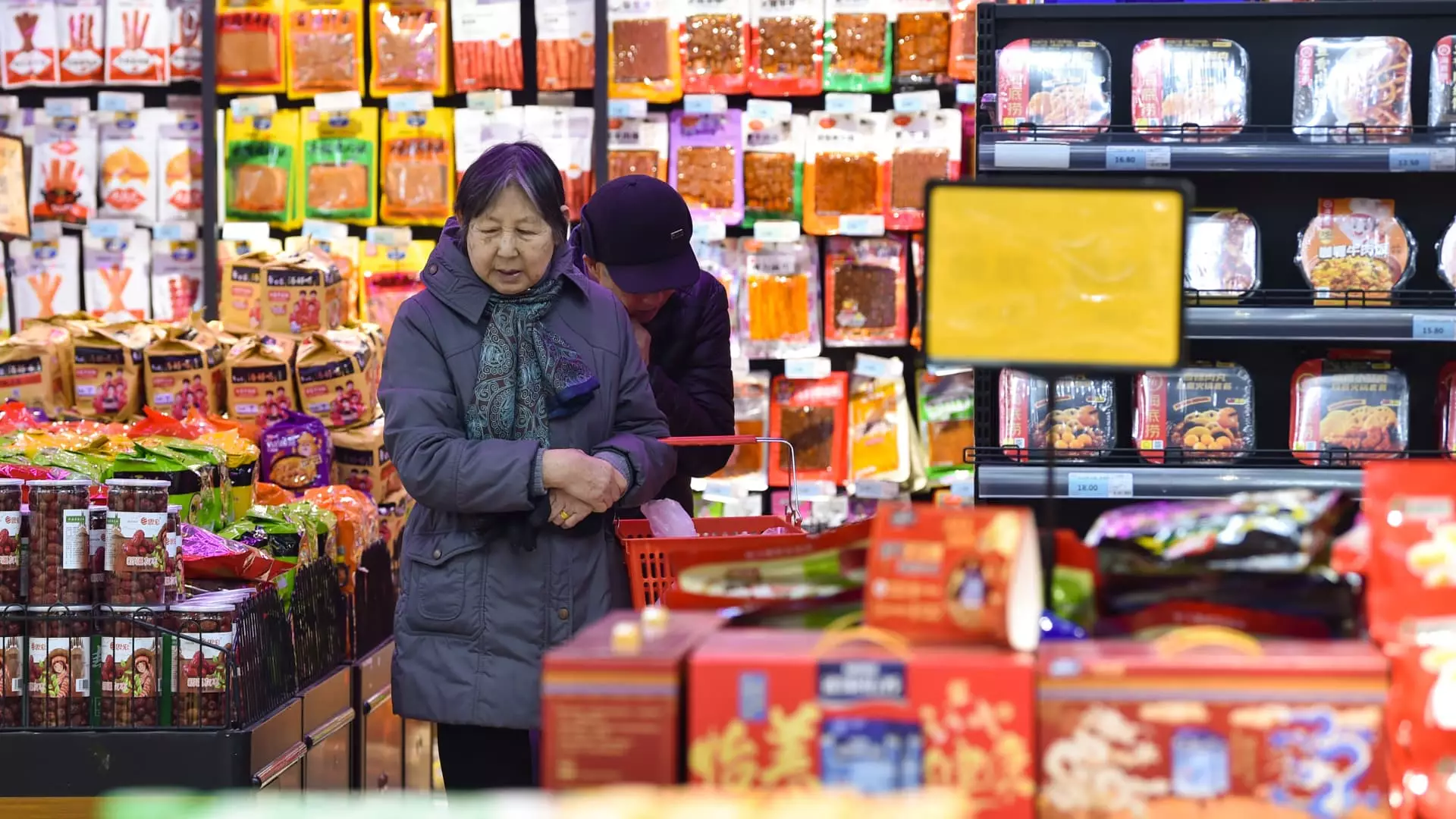In January, China’s economy revealed a paradoxical situation as consumer inflation climbed to its highest rate in five months. Simultaneously, the producer price index reflected persistent deflation, embodying the complexities and challenges within the country’s economic landscape. With domestic spending exhibiting signs of weakness amid slack factory performance, analysts are calling for strategic policy adjustments to invigorate sluggish growth. The interplay of these economic indicators underscores the necessity for a cohesive plan to address both consumer behavior and production capabilities.
Data from the National Bureau of Statistics indicated that the consumer price index (CPI) surged by 0.5% year-on-year in January, a notable increase from a modest 0.1% in December. This rise outpaced analysts’ expectations of a 0.4% uptick, hinting at a potential shift in consumer sentiment. Core inflation, which strips out the often volatile food and fuel prices, accelerated to 0.6%, up from the previous month’s 0.4%. Such nuances reflect the transient nature of consumer behaviors, particularly in the wake of seasonal festivities such as the Lunar New Year, which tends to spike demand for goods and services. However, while inflation appears on a gradual upward trajectory, concerns mount regarding the sustainability of this growth.
In stark contrast to consumer trends, the producer price index (PPI) recorded a decline of 2.3% year-on-year in January, consistent with December’s figures. This trend marks an alarming 28 consecutive months of deflation in factory-gate prices, primarily attributed to excess production capacity in various industrial sectors. Economists, including Xu Tianchen from the Economist Intelligence Unit, suggest that significant recovery in producer prices is unlikely in the near future, as structural issues impede price stabilization. The ongoing deflationary environment poses an additional quandary for policymakers, who are pressed to address both consumer and producer inflation without exacerbating existing economic tensions.
The external economic landscape, characterized significantly by U.S. tariffs on Chinese imports, adds an additional layer of complexity to China’s economic dynamics. As the U.S. and China engage in ongoing trade conflicts, these tariffs have introduced immense pressure on China’s export-reliant sectors, heightening concerns that weak domestic demand could translate into broader economic malaise. Economists predict that unless decisive measures are taken to stimulate consumer spending, the prevailing deflationary pressures may become a larger obstacle to economic recovery.
Consumer spending patterns during the festive season present a mixed narrative. While there was an uptick in expenditures on cinema, dining, and travel—reflective of a certain buoyancy in consumer activity—overall per capita spending grew a mere 1.2%. This growth sharply contrasts with the previous year’s robust increase of 9.4%. Such figures imply that, despite certain areas of consumer vibrancy, broader apprehensions regarding job security and wage levels are restraining more formidable consumption trends. Analysts at ANZ underscore that these spending hesitations might pose significant hurdles to reaching the government’s inflation targets, which have been missed for thirteen consecutive years.
As China gears up for potential policy shifts leading into the annual parliamentary session in March, the urgency for strategic intervention is palpable. With provincial growth targets reflecting cautious optimism—averaging below 3%—there is an evident recognition of the challenges ahead. Industry experts emphasize that the government’s priorities must balance external pressures and domestic economic revitalization efforts in navigating this complex economic landscape. Moving forward, fostering both consumer confidence and stabilizing production levels will be pivotal in steering China toward sustainable growth amid a rapidly evolving global economy.


Leave a Reply